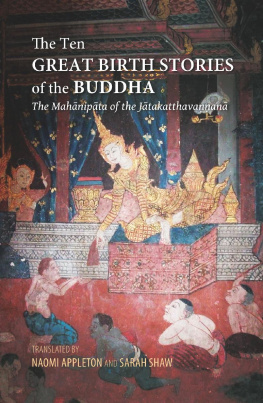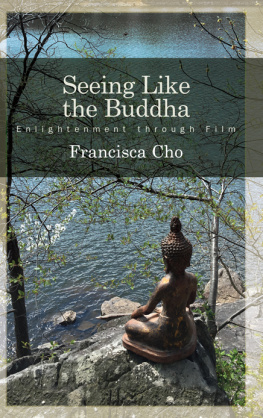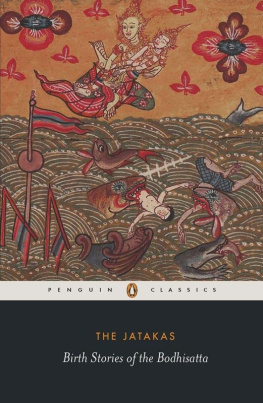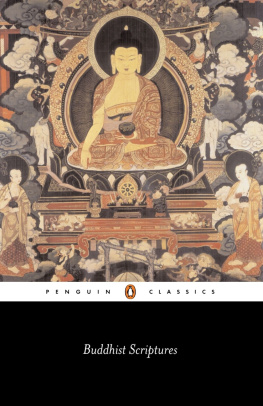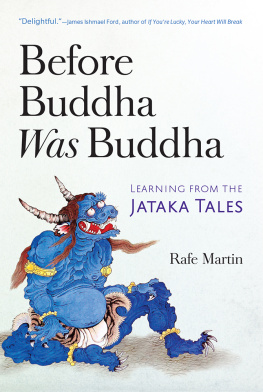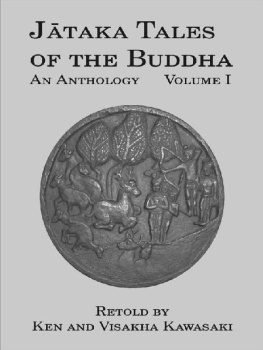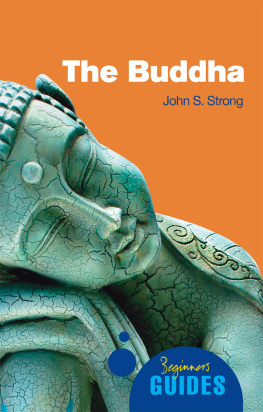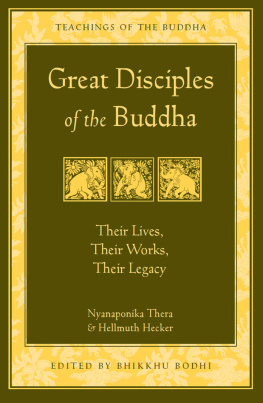The Ten Great Birth Stories of the Buddha
The Birth Story of Temiya
Abbreviations
F | Fausblls edition of the Jtakatthavaan |
J | Jtakatthavaan stories by number, or volume and page as in the Cowell/Rouse translation |
PED | Pli-English Dictionary , ed. Rhys-Davids and Stede |
VRI | Vipassana Research Institute electronic edition of the Pli scriptures |
TEMIYA
The Birth Story of Temiya, or of the Dumb Cripple
( Temiya-jtaka or Mgapakkha-jtaka )
INTRODUCTION
In this, the opening story of the Mahnipta , the Bodhisatta is born as a prince and pretends to be deaf, mute, and crippled in order to avoid inheriting the kingship. The two names by which the story is known reflect the name (Temiya) and feigned characteristics ( mgapakkha dumb cripple) of the Bodhisatta. The story is divided into two sections; the first in the palace and the second in the forest. With this simple setting and a very limited number of key characters, the focus of the story is on the psychology of the leading players, particularly Temiyas extraordinary resolve in the face of temptation and pain, and his mothers grief at her sons apparent disability and death. Tension is built up by the description of Temiyas childhood and the various tests to which he is subjected. Temiyas persistent determination to remain motionless is finally broken after sixteen years, when he stretches out his limbs, picks up his chariot, and swings it over his head like a toy. This climactic moment of the narrativethe motion of the chariot and the strength of the Bodhisatta contrasting so dramatically with his childhood paralysisis often illustrated in manuscripts and temple murals. It also forms the climactic moment in the recent opera production
The Silent Prince , for it is the first time that the prince makes a sound. The story then moves to the forest, a peaceful juxtaposition to the busy life of the city and a place in which real spiritual progress can be made.
Friends and Family
This story hinges on the actions of four main characters: the Bodhisatta, his father, his mother, and the charioteer ordered to kill him. That the central figures of the narrative are so few allows the development of deep personal interactions. Temiyas parents are shown as essentially loving and concerned, but increasingly frustrated and upset by his lack of movement and sound. Temiyas mother demonstrates her affection by begging Temiya to change his ways and her husband to spare his life. The bitter questions she asks of the charioteer she believes has killed her son create a truly poignant interchange. Temiyas father also has affection for his son, but additionally he feels the influence of his brahmin advisers and the responsibility of providing for his kingdom. In the character of the charioteer, tasked with getting rid of the useless prince, we find a more neutral backdrop for Temiyas words and actions. Initially willing to carry out the kings command, the charioteer soon takes the advice of the prince and acts as intermediary between son and father. With a down-to-earth concern for his own welfare, he is careful to ensure that he is not going to be unduly punished by the royal couple, such that, in Shaws (2006a: 184) words, his sense of diplomacy and pragmatism gives a non-heroic counterpoint to the unfolding drama.
One of the interchanges between Temiya and the charioteer is considered to be a paritta text and is therefore chanted for its protective benefits. These verses concern friendship and the many rewards that come from loyalty towards and care of ones friends. Although delightful and popular verses in their own right, these sit rather oddly in the narrative, for Temiya and the charioteer are not friends: the latter is merely the employee of Temiyas father. In fact Temiyas rationale for speaking the verses is that he (Temiya) is like a branch of a tree (the king) under which the charioteer has been enjoying the shade. Just as one wouldnt cut off the branch of a tree that had been of service, so the charioteer should not kill Temiya. The background is therefore a discussion of service and reward. However, the inclusion of an extended sermon on the benefits of friendship works well in a story that serves to deconstruct the hierarchies of city life by moving everybodythe royal family, the citizens, and even the charioteerinto the forest hermitage. All become friends and equals, and even the forest animals, by having friendly thoughts, attain a heavenly rebirth.
Renunciation
In the introduction to the story we hear that it was told by the Buddha after his monks sat discussing his great renunciation. Indeed, the perfection of renunciation ( nekkhamma ) is the one associated with the story by the Thai tradition, and it is a clear focus of the story. However, the story is also closely linked to another perfection, that of determination or resolve ( adhihna ), and it is this perfection with which the story is associated in the Jtaka-nidna (the preface to the Jtakatthavaan ) as well as in the Cariypiaka . It is the great resolve of the Bodhisatta as the child Temiya, subjected to a whole host of difficult tests, that allows him to renounce as he wishes, and thus both perfections play a key role.
More perhaps than any other jtaka story, the Temiya-jtaka extols the benefits of renouncing for everyone . It is not only that the Bodhisatta wishes to escape his particular fate (as future king) and practise meditation. He then goes on to extol the general benefits of forest-dwelling such that first the charioteer, then the royal family, the citizens at large, and even enemy kings all wish to renounce too. Renunciation is explicitly presented as something suitable for everyone, not only to be left to older people: Temiyas verses to his father about the perils of youth and the unstoppable nature of death reinforce the urgency of renouncing even for the young. This serves as a counterpoint to other jtaka s, such as the Nemi-jtaka (Chapter 4), in which the Bodhisatta renounces only after seeing his first grey hair.
The forest life itself is appealing in its simplicity, and fits into a wider South Asian tradition of renunciation: the bark robe, the leaf hut, and the subsistence on fallen fruit are all pan-Indian ascetic ideals. Indeed, since this is a time without Buddhism, we do not see the characters becoming monks or studying the scriptures, though meditation is on the programme as are dhamma talks by Temiya. The renouncers appear to live a blissful unhurried life in which they are free to practise meditation and attain the higher knowledges. Since the gods kindly provide the hermitage, complete with a well and fruiting trees, the hardships that might be expected from an ascetic life are restricted to Temiyas decision to eat unseasoned boiled leaves, and even this apparently improves his complexion! The long-term benefits of the renunciate lifestyle are made clear by the declaration that all of the renouncers attain rebirth in the Brahm heavens, and even the animals make it to the lower heavens.
Kingship
Although this story has much to say about the benefits of renunciation in general, the initial part of the story focuses on a more specific aim: Temiyas desire to avoid inheriting the kingship. Many jtaka stories portray the Bodhisatta as a just king. In the Nemi-jtaka (Chapter 4), for example, the Bodhisatta-as-king ensures the welfare of his subjects by setting an example with his moral and generous life. He does eventually renounce, but only after fulfilling his duties as ruler and beginning to grow old, at which point he passes the kingdom to his son. Similarly, in the Janaka-jtaka (Chapter 2) the Bodhisatta rules for many years before eventually deciding to leave his wife and kingdom and enter the forest as a renouncer. In other stories, such as the Mahosadha-jtaka (Chapter 5), the Bodhisatta is an adviser to a king and serves to preserve and support the kingdom. In none of these stories is kingship so heavily criticised as in the Temiya-jtaka . Rather, it seems that a distinction is made between good and bad kingship.
Next page
